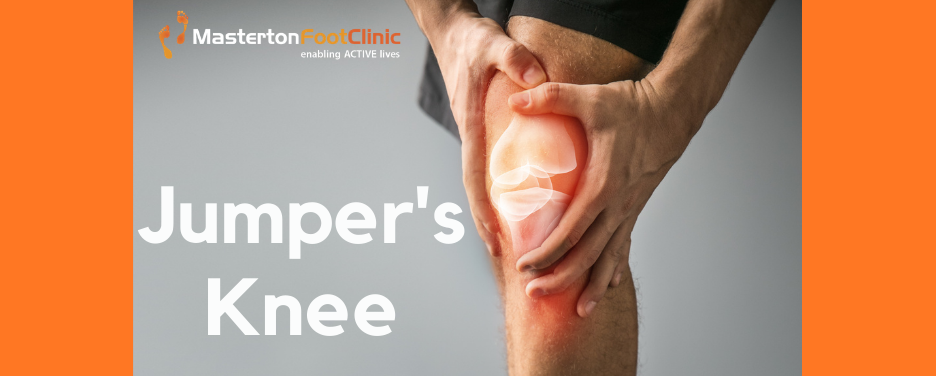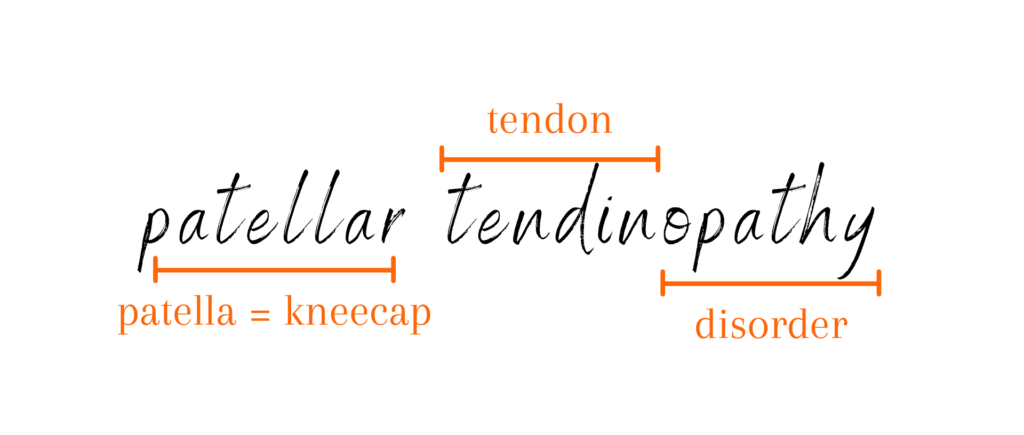
Medically known as patellar tendinopathy, jumper’s knee describes damage to, and painful inflammation of, the patellar tendon – which runs across the front of your knee, and in which your knee cap is embedded. This tendon extends down from your quads at the front of the thigh and plays an essential role in our ability to run, kick, jump, and generally move our legs, although its primary function is straightening the knee, as well as keeping our kneecap in place.

What causes the patellar tendon to become damaged?
Damage to the patellar tendon occurs when overloaded and placed under high forces, which can occur during activities involving regular jumping like volleyball or netball and many non-jumping activities like running. When the tendon is overused and stressed past the point that it can safely handle, small tears develop in the tendon fibres. When you continue to strenuously use the knees without letting the tissue damage heal and repair, the tendon will become weaker over time, and you may end up with a longstanding problem, instead of just a one-off injury. This is why good care and timely treatment is very important.
The contributing factors to patellar tendinopathy range from poor foot and leg structure and function (biomechanics), to muscle imbalances or inflexibilities, to overdoing it with high-impact activities.
What does patellar tendinopathy feel like?
You’ll likely feel pain below and around the kneecap, particularly when you bend and straighten it. There may be some inflammation and stiffness around the knee in the initial stages of injury too – though this may reduce the longer it is left untreated as chronic damage develops.
Treating jumper’s knee
Treating your knee pain starts with alleviating the painful symptoms and understanding the cause of the problem using a comprehensive biomechanical assessment carried out by our podiatrists.
We then use treatments like 3D-scanned custom foot orthotics paired with the right footwear, shockwave treatment, strapping, bracing, gait retraining and physical therapy, particularly focusing on stretching and strengthening, to help improve your knee movement and limit overuse.
Ultimately, our goal is always to prevent your knee pain from coming back or turning into a longstanding problem that would otherwise continue to cause you ongoing pain in the future.
FAQs
Will patellar tendinopathy get better on its own?
Given that you engage your knee joint (and its muscles and tendons) with every step, it can be very difficult to recover from a jumper’s knee without professional guidance and care. If left untreated, your pain can also worsen to a chronic tendinopathy with a much longer recovery time – and much more downtime.
I don’t participate in any jumping sports. Why have I developed jumper’s knee?
Jumper’s knee gets this nickname due to the actions and forces involved in jumping putting a person at a higher risk of developing this condition – but you don’t need to be involved in a jumping sport to sustain the injury. Even suddenly increasing your training intensity or developing muscle imbalances, such as tight hamstrings or weak quads, can be enough to bring on the pain.
Do I need to wear a knee brace for treatment?
Potentially – this really depends on your symptoms and what has caused your jumper’s knee – all of which we’ll assess at your appointment. Some of our patients do end up wearing a simple knee brace, while many don’t. If you have any concerns around wearing a brace if we suggest one, just let us know. There are alternatives like teaching you how to strap your knee.
Does ACC cover treating patellar tendinopathy?
If your injury was sustained as a result of an accident, then you may be eligible for ACC. We will fill out your paperwork and submit a claim, it is up to ACC whether or not you are covered.
